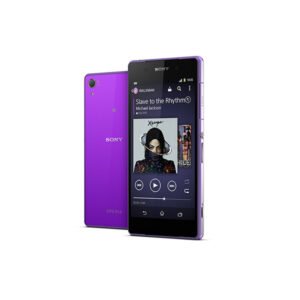The controversy between mobile advertising and desktop advertising continues to realize traction. With consumers’ preferences shifting and technology advancing, businesses must understand the nuances between these approaches. Both mobile and desktop platforms supply unique opportunities, but they cater to totally different user behaviors, preferences, and consumption patterns. Understanding the key variations between mobile advertising and desktop advertising is essential for maximizing ad effectiveness, engagement, and ROI.
1. Person Behavior and Engagement
One of the crucial critical differences between mobile and desktop advertising is how customers work together with each platform. Mobile users tend to be on the go, multitasking, and looking for quick information. Desktop customers, however, are more likely to be stationary, focusing on tasks such as working or researching.
– Mobile Ads: Mobile customers have shorter attention spans and sometimes consume content in short bursts. Ads on mobile units need to seize attention quickly, typically with bold visuals and concise messaging. Interactivity is a key advantage of mobile ads, with touch screens enabling swipes, clicks, and interactive elements that enhance consumer have interactionment. As an illustration, mobile apps and games usually function highly engaging ads that may contain customers more dynamically, like playable or rewarded ads.
– Desktop Ads: On desktops, users generally have more screen space and tend to spend more time engaging with content. This allows for more detailed and informative advertising. Desktop ads can feature larger, more elaborate visuals, and marketers have more flexibility with formats, corresponding to banner ads, video ads, or pop-ups. Desktop customers are more likely to interact with longer content, making it best for ads that require more rationalization or particulars, akin to product demos or explainer videos.
2. Screen Dimension and Display Limitations
The dimensions of the screen is one other defining characteristic that separates mobile from desktop advertising. Mobile gadgets have a lot smaller screens compared to desktops, which significantly influences how ads are displayed and consumed.
– Mobile Ads: As a result of smaller screen size, mobile ads should be optimized for limited real estate. Cluttered designs or overly complicated messaging may end in poor person experiences. Mobile ads generally deal with simplicity, that includes fewer elements, massive buttons, and clear calls to motion (CTAs). Mobile-particular ad formats, corresponding to native ads and vertical video ads, work well in this context because they are tailored for quick consumption and minimal distractions.
– Desktop Ads: On a larger screen, there’s more room to create immersive, content-rich advertising experiences. Ads on desktops can use intricate designs and a better level of detail without overwhelming the viewer. This is particularly helpful for industries where complex or high-worth items are being marketed, resembling real estate or automotive ads. Desktop advertising can even incorporate a number of ad formats on the same page, resembling banner ads paired with sidebars or sponsored content.
3. Ad Formats and Compatibility
The types of ads that perform greatest on mobile and desktop platforms also differ due to the capabilities and restrictions of every device.
– Mobile Ads: Mobile ads offer various formats like in-app ads, mobile-optimized web banners, push notifications, and SMS marketing. Since many users spend significant time in apps, in-app advertising has grow to be a profitable strategy for businesses. Additionalmore, mobile advertising benefits from location-primarily based targeting, which allows marketers to push hyper-related ads to customers primarily based on their real-time locations.
– Desktop Ads: Desktop ads assist a broader range of formats, including display ads, pop-ups, retargeting ads, and more sophisticated video advertising. Retargeting users across multiple sessions is more common on desktops, the place cookies track person behavior for longer periods. Additionally, desktop ads tend to support more in depth campaigns the place detailed, long-form content material, comparable to white papers or webinars, are promoted.
4. Targeting Capabilities
Targeting capabilities range significantly between mobile and desktop platforms, with each providing totally different strengths based mostly on consumer habits and technological constraints.
– Mobile Ads: Mobile advertising excels in offering exact targeting through location data, machine-specific behaviors, and app utilization patterns. Geo-targeting and geo-fencing enable advertisers to send hyper-localized ads to customers close to their physical areas, which is highly useful for local businesses. Additionally, since mobile gadgets are often tied to specific individuals, the data collected may be more personal and accurate for ad targeting purposes.
– Desktop Ads: Desktop advertising provides highly effective targeting opportunities primarily based on cookies and browsing behavior. Desktop users tend to remain logged into multiple accounts, allowing for detailed tracking across completely different websites and sessions. This enables retargeting primarily based on browsing history, purchase intent, and even account-primarily based marketing (ABM) for B2B advertising.
5. Performance Metrics and ROI
Performance metrics and ROI measurement additionally differ between mobile and desktop advertising, largely due to the differences in person habits and gadget functionality.
– Mobile Ads: Metrics like click-through rates (CTR), viewability, and interaction rates are often higher on mobile units, particularly for formats like native ads or video ads. Nonetheless, mobile ads might experience lower conversion rates for more advanced actions akin to form fills or detailed product purchases, since users prefer completing these actions on desktops. Due to this fact, mobile ads are often better suited for awareness campaigns or driving initial interest.
– Desktop Ads: Desktop ads, however, tend to see higher conversion rates for more complex goals like purchases or lead generation. Desktop customers are more likely to complete long-form actions, comparable to filling out a form, making a purchase, or watching a full product demo. This makes desktop advertising essential for the later levels of the sales funnel, the place detailed information is required to drive conversion.
Conclusion
While both mobile and desktop advertising provide distinctive advantages, the key to success lies in understanding the strengths and limitations of every platform. Mobile advertising excels in engagement, interactivity, and precision targeting, making it ideal for on-the-go users seeking quick information. Desktop advertising, with its larger screen size and ability to handle more detailed content, is better suited for complicated campaigns that require more in-depth user interaction.
By balancing each mobile and desktop strategies, companies can create a more comprehensive and effective advertising campaign that caters to a broad range of users and maximizes total ROI.
If you have any concerns pertaining to exactly where and how to use advertisement platform, you can contact us at our web site.

















